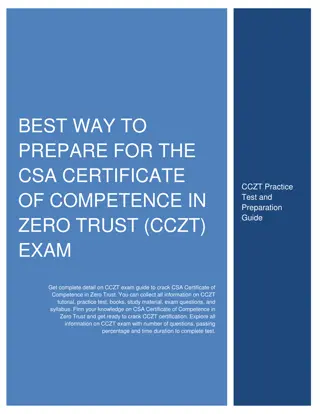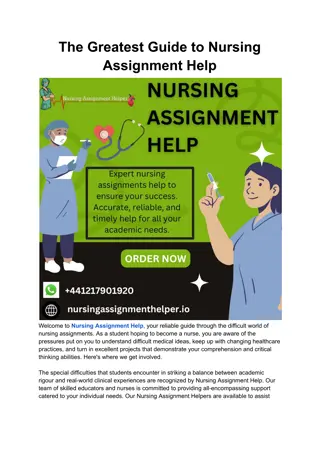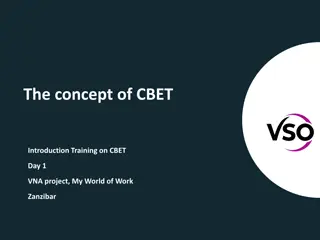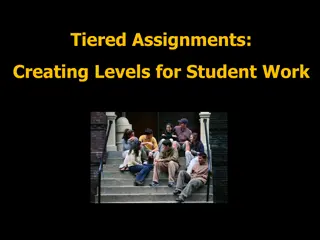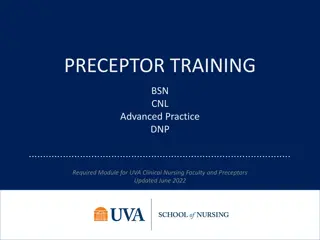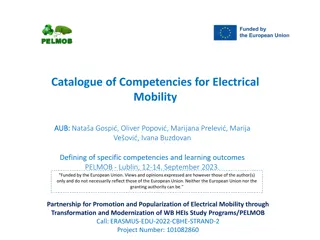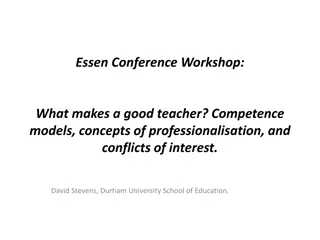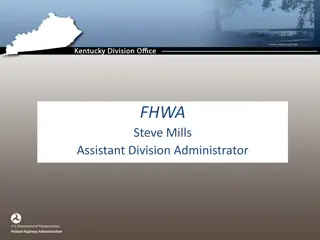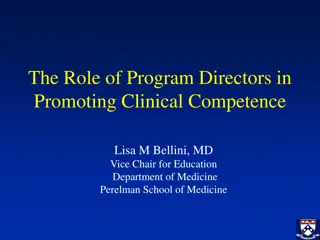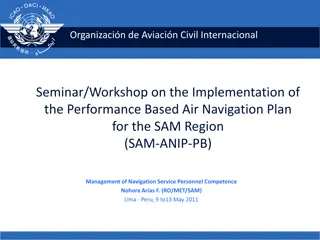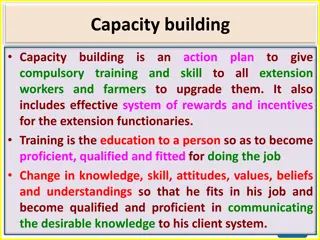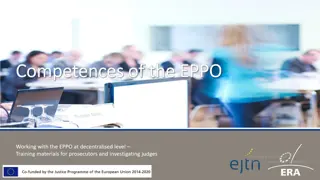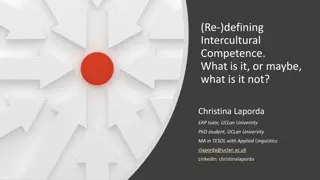Training on Competence-Based Education and Practical Assignments
Dive into a comprehensive training program focused on Competence-Based Education (CBE) and practical assignments in Zanzibar. Explore topics such as designing practical assignments, feedback processes, lesson design shifts, and more. Reflect on your experiences and collaborate with colleagues to enhance your teaching approach towards more practical applications. Gain insights on the characteristics of practical assignments and set goals for continuous improvement.
Download Presentation

Please find below an Image/Link to download the presentation.
The content on the website is provided AS IS for your information and personal use only. It may not be sold, licensed, or shared on other websites without obtaining consent from the author. Download presentation by click this link. If you encounter any issues during the download, it is possible that the publisher has removed the file from their server.
E N D
Presentation Transcript
CBET and practical assignments Introduction Training on CBET Day 3 VNA project, My World of Work Zanzibar
WELCOME AND INTRODUCTION Programme Reflection on day 2; Expectations and objectives day 3; Your experiences with lesson-design; The shift towards CBL; The design of practical assignments and criteria; Examples of two practical assignments; The design of a practical assignment for your own lessons; Logbook: reflection and conclusions; Evaluation.
WHAT DID YOU SHARE AT HOME? When you came home after the last day of the training, what did you share with your family or friends about it?
OBJECTIVES Awareness of the need to make a shift from theory to more practical assignments; Getting insight in the design of practical assignments: CBL criteria; Giving feedback to improve two examples of practical assignments; Designing of practical assignments for own lessons; Reflection in logbook, conclusions and setting goals.
YOUR EXPERIENCE WITH LESSON-DESIGN How do you design your lessons now? Share your answers with your colleague in a group of your own area of specialization. Compare your answers with the first column From on the hand-out 3.4. Knowledge-Based Learning (KBL). In the group we discuss the results.
THE SHIFT IN DESIGN PRINCIPLES Fill in the second column: To Competence-Based Learning (CBL); Study the completed hand-out 3.5 and give your statement about the shift; Discussion and conclusions about the shift in design principles.
CHARACTERISTICS OF A PRACTICAL ASSIGNMENT The assignment resembles as close as possible the real workplace with its tasks and duties; It integrates/connects various subject matters; All necessary competences are incorporated in the task; It is a tangible product, which is relevant in the specific professional context;
CHARACTERISTICS OF A PRACTICAL ASSIGNMENT (CONT.) It can be done either individually or in cooperation; It draws on different qualities of the learner; It motivates the learner to get started and to develop his or her career; When a learner has finished a professional task, he or she has mastered all the necessary competences.
QUALITY CRITERIA FOR PRACTICAL ASSIGNMENTS Derived from professional practice; Challenging; Complex; Goal-oriented; Promotes learners self-motivation and interest; Matching the learners level; Is suitable to be assessed by multiple assessors; Leads to learning.
TITLES OF GOOD PRACTICAL ASSIGNMENTS Authentic tasks or practical assignments in industry and communities: Organise a computer course for community citizens; Write a policy document for ; Design a plan to make burglar-proof; Acquire from your town council the assignment to redesign the town square; Organise the graduation day at your institute.
EXAMPLES OF TWO PRACTICAL ASSIGNMENTS Two teachers have made a practical assignment: one for ICT and one for Plumbing; Read the practical assignment of your choice and give your likes, questions and comments; In subgroups you produce feedback what could be improved with the help of the quality criteria; Sharing feedback in the whole group; Reflection in logbook: What do I like about these assignments and what is useful for my own lessons?
DESIGNING PRACTICAL ASSIGNMENTS Brainstorm in your subgroup the practical assignments you have in mind for your own lessons; Choose one, read hand-out 3.8 Practical assignment and start the design with: A title (attractive to students) A short description (clear, challenging, resembling the tasks in the real workplace); The number of lessons/weeks students will work on it; Which module will be covered? Put your first ideas on a flipchart.
PRESENTATION OF YOUR OWN PRACTICAL ASSIGNMENTS Gallery walk: walk around in the room and look at all the flipcharts what is written on it; One of each subgroup stands near his/her flipchart to give some explanation; Discuss with the presenter what you like about the ideas presented; Sharing feedback and drawing conclusions in the whole group; Logbook reflection: to give your own ideas and to plan how, when and with whom to work on your practical assignment.
EVALUATION Make a emoticon that shows how you think and feel about the third day of this Introduction Training on CBET.
CBET and practical assignments Introduction Training on CBET Day 3 VNA project, My World of Work Zanzibar





